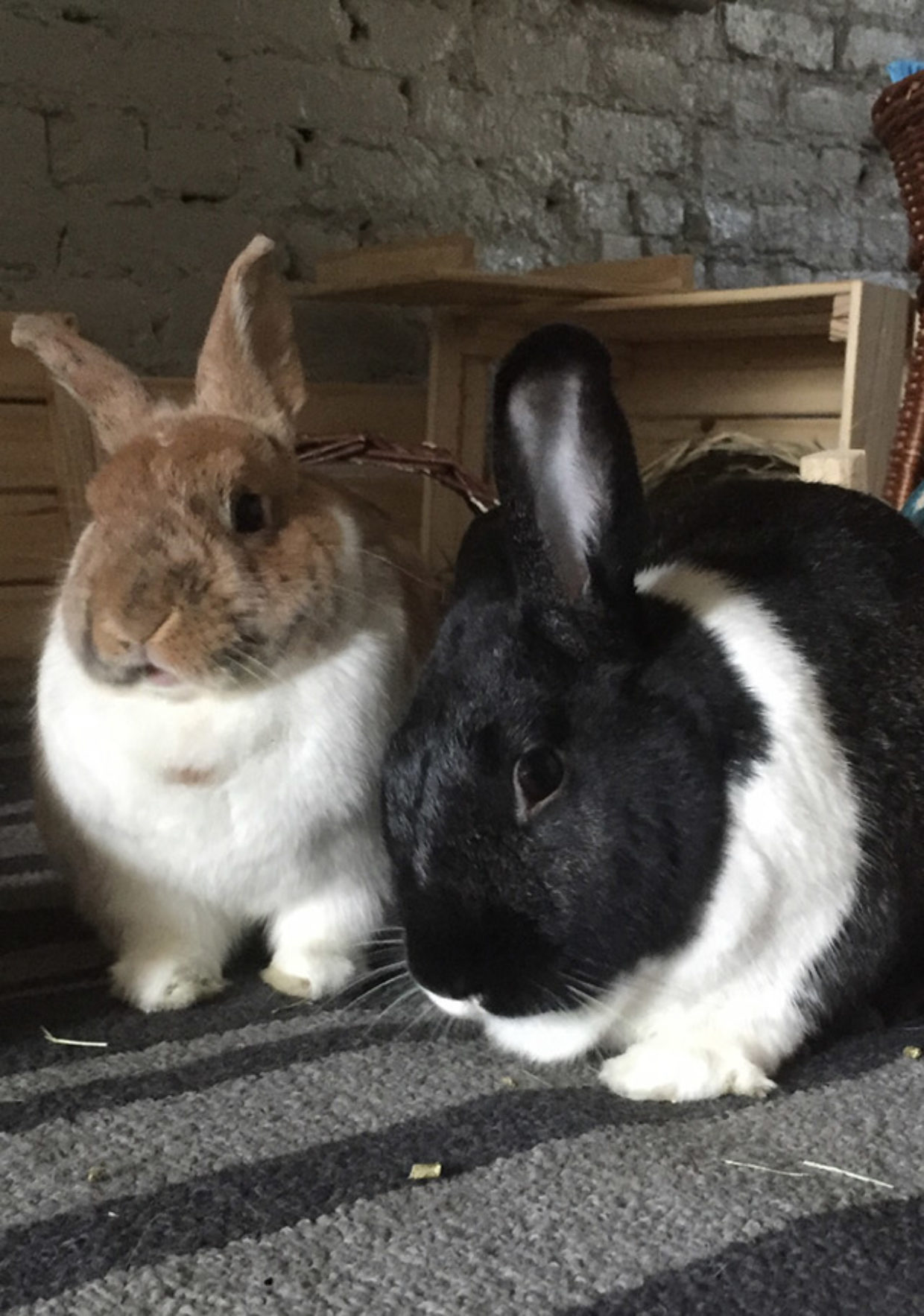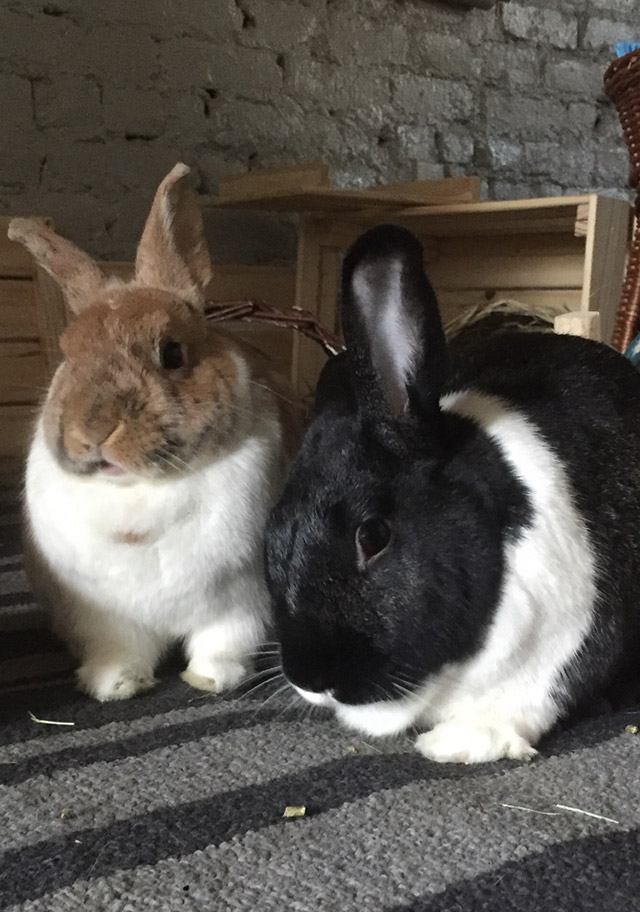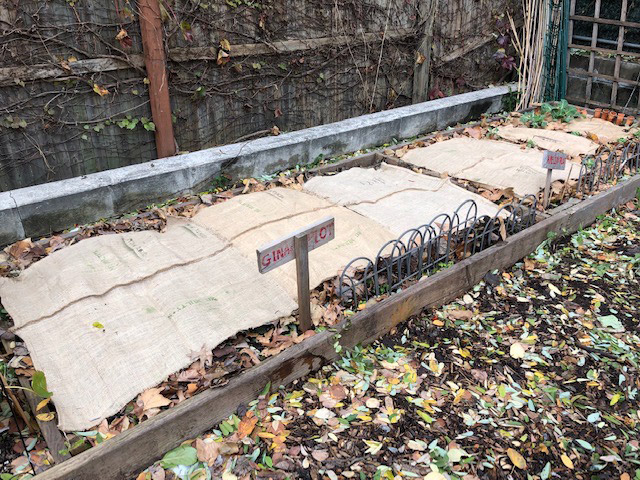Love Song to Bunny Poop

Love Song to Bunny Poop: a gardener’s gratitude
By Amelia Wilson
I’ve been an amateur–but serious–gardener for most of my life. My mother, a history professor in a small town in the Midwest, was a certified organic farmer well before there were trendy farmers’ markets and organic sections in every grocery store, Walmart and food-co-op. My stepfather, Seymour (also a history professor), proudly walked around town with shirts reading “Compost Happens” and “Stop Treating Our Soil Like Dirt.” More than anything, we worshiped worms. Charles Darwin’s “The Formation of Vegetable Mould Through the Action of Worms: With Observations on Their Habits” was required reading in our household, and in the 1980s the massive compost heap in our backyard drew our neighbors’ curious stares at a minimum—and more often, their open contempt and muttered complaints about everything from smell to unseemliness to “rodents” (there were none). But these were unenlightened people, we thought, the very same who would foolishly rake up and bundle in plastic bags their precious leaves every fall for the trash collectors to haul away. Blasphemy! Because each gardener knew one thing: that without compost and natural fertilizer, the soil is literally dead. In the words of Walt Whitman, “Behold this compost! Behold it well…It grows such sweet things out of such corruptions.”
It was in 2010 that I was introduced to my first house bunny, a male Mini Rex named Greta. He was extremely tidy and exacting, as bunnies go, and while free-roaming throughout my new girlfriend’s apartment he was nevertheless completely litterbox-trained. I was shocked. My only exposure to rabbits had been to see them darting through our backyard as a kid. My mom and Seymour saw them as both a menace to their early-spring carrot tops and delicate herb shoots, but also a gift. Seymour would say, “Let’s hope they drop some turds if they’re going to pillage our garden!”
Greta’s mom and I eventually moved in together and shared a home with Greta until he passed away at the age of 11. In the four extremely lucky years that my life overlapped with his, Greta only dropped perhaps one or two small round poops on the floor, total. Once I found an errant poop and held it between two fingers, giving it a gentle pinch. It was perfectly formed, dry for the most part, and had virtually no odor. It was almost…pleasant, as poops went. But beyond that I didn’t see much use for it. And I certainly didn’t give much thought to how my new love (bunnies) might intersect with my old love (gardening).
We continued volunteering with rabbit organizations and rescues, eventually adopting three rescue “perma-buns,” Butter, Pippi and Dashie, and enjoying a rotating door of fosters and bunny-sitting visitors. During the evening we would clean litter boxes, and on the weekend I would garden.
One cold winter night nearly two years ago we were having dinner with a dear friend and co-gardener, Gina. Gina is a true intellectual who voraciously reads about and tests every theory of whatever interests her in an effort to improve her methodology while maximizing efficiency and productivity. That said, neither of us are especially good gardeners. We love it—and every spring we march out to our little shared plot in Brooklyn with renewed vigor, optimism and enthusiasm. Together we have tried every natural trick known to civilization on a wide range of gardening topics: irrigation, drainage, pest control, microbe diversity, invisible chemical interactions between plants, soil acidity, pruning, cat deterrents, season prolongers, and so on. And yet year after year our plants fared decently—but not overly well. Some plants failed outright, while others made a big show to only (in the end) give us one or two mealy tomatoes or a few wrinkled peppers. Our beans would struggle to climb the pole; basil would grow spindly and bitter; and most heartbreakingly of all, potatoes would rot in their beds.
Pippi and Dashie bopped happily around the living room that winter evening as we drank wine and lamented past crops. Gina suddenly looked at me and said: “their poop.” My head tilted in a lack of understanding. “Their poop?” Her response, more emphatic, “my god, their POOP!” It’s FABULOUS! I read about it on vegetablegardener.com!” And with that she sprang to her feet and hastened to one of the litter boxes. Questions tumbled out of her mouth. How much did they poop in a day? Could it be easily collected? What about frozen? Could it be sifted from the hay to increase collection rates?
As much as I love our buns, I wasn’t thrilled by the idea of crawling around on my hands and knees rooting through their copious waste product, and especially, storing it for months on end in our freezer next to our veggie burgers. But as our research on the wonders of bunny poop bloomed and expanded, there was really only one thing to do. Collect it—and let the resulting summer vegetables speak for themselves.
Eleanor Perenyi in her beautifully written book, “Green Thoughts: A Writer in the Garden,” speaks specifically about poop in her chapter entitled “Compost.” She writes that the “perpetual cycle of decay and renewal” inherent in compost is expedited by the introduction of animal manure. The poop “burns” faster than other organic materials, and this enriches the mixture and improves tilth (the condition of the tilled soil). The poop’s fibrous texture assists in drainage while simultaneously holding moisture to help reduce the effects of drought. Finally, the heat generated from the composting poop protects against freezing—a huge benefit in the spring when one late frost can wipe out months of work.
Vegetablegardener.com explains in its July 30, 2008 article “Using Manure to Fertilize Your Garden” that poop consists of three basic elements critical to the health of the soil and, in turn, the plants: nitrogen, phosphorus and potassium. Nitrogen assists plants in building the protein they need to construct strong stems and roots. Phosphorus is a conduit for energy, enabling plants to move resources up to the leaves and eventual fruit. Potassium, meanwhile, helps plants produce sugar—especially critical in root vegetables containing high amounts of sugar such as carrots and beets.
Of all the animal manures, bunny poop is uniquely perfect for gardeners. It is not only packed with digested hay (thereby making it more fibrous), but it is basically a small, round, powerful nitrogen ball with a slow release. Bunny poop is also higher in potassium and phosphorous than that of other herbivore animals such as goats and sheep. And while bunnies eat a massive amount of hay—estimates vary, but seem to point to 100 pounds a year—they produce almost the same weight of poop. So as long as you’re willing to collect it and store it, you’re getting back what you put in.
Plots in bed for the winter with bunny poop and leaves tucked under a blanket of hemp.
And so it began that for the next few months, I found myself picking up the “turds” of Pippi, Dashie, Butter and a number of other fuzzy denizens who flowed in and out of our home as I dreamed of spring. That March, Gina and I trudged with bags of frozen nitrogen balls under our arms out to our little plot and sprinkled them over the top. A few quick turns of the soil, a few cold rainy afternoons, and finally a lengthening of sunny days meant it was time to test our theory. That April we direct-sowed carrots and beets, fava beans and pole beans. With May came the basil and marigolds. And finally, with glorious June upon us, the beloved tomatoes, cucumbers, and peppers appeared.
I won’t go through all the marvelous bursts of orange, red, green, yellow and purple that graced our plot this summer, or the majesty of the tall swaying carrot tops in the breeze, or the crowding of beans as they vied for space on the poles, or all the gazpacho and tomato sauce and pesto we produced, but suffice to say that it was truly a bountiful year—a time of plenty. They didn’t know it, but our buns contributed greatly to their own lives as well—as their bowls brimmed with fresh green herbs and bright crisp lettuces.
Bunny poop is priceless—and costs nothing. Our bunnies are not required to make such powerful contributions to the garden, but I am sure glad they do. And I will never squander their gift again.


